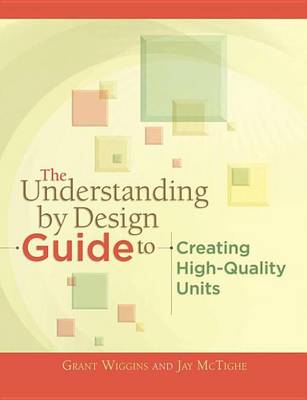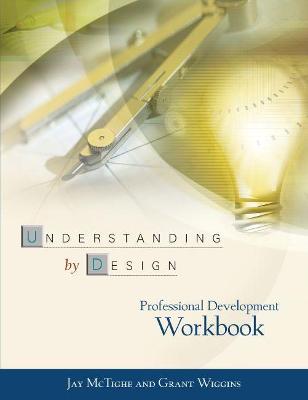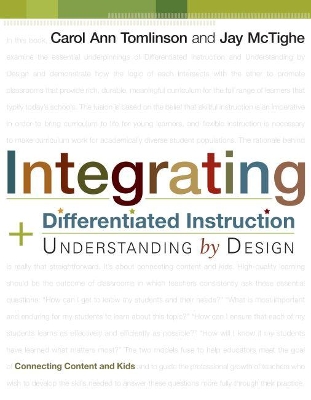Professional Development
4 total works
The Understanding by Design Guide to Creating High-Quality Units
by Grant P Wiggins and Jay McTighe
Published 11 March 2011
Whether you are an experienced curriculum designer or new to Understanding by Design (R) (UbD), you will benefit from the latest design tools and the updated UbD unit Template 2.0. UbD authors Grant Wiggins and Jay McTighe share their insights and the practical tips that have helped thousands of educators design curriculum based on the UbD framework. The Guide features a set of modules containing guiding worksheets and exercises that take you through the three-stage unit design process to: Identify Transfer and Meaning-Making goals (Stage 1). Develop performance tasks to assess understanding (Stage 2). Use the A-M-T construct to create more focused and powerful lessons (Stage 3).The new UbD Template is illustrated with fresh unit samples, and readers have access to more than 100 additional pages of online resources, including additional unit examples and helpful responses to frequently asked questions. Both novices and veterans alike will unquestionably benefit from this newest resource in the UbD series.
Understanding by Design Professional Development Workbook
by Jay McTighe and Grant Wiggins
Published 30 March 2004
Integrating Differentiated Instruction and Understanding by Design
by Dr Carol Ann Tomlinson and Jay McTighe
Published 1 January 2006
Teachers struggle every day to bring quality instruction to their students. Beset by lists of content standards and accompanying ""high-stakes"" accountability tests, many educators sense that both teaching and learning have been redirected in ways that are potentially impoverishing for those who teach and those who learn. Educators need a model that acknowledges the centrality of standards but also ensures that students truly understand content and can apply it in meaningful ways. For many educators, Understanding by Design addresses that need.
Simultaneously, teachers find it increasingly difficult to ignore the diversity of the learners who populate their classrooms. Few teachers find their work effective or satisfying when they simply ""serve up"" a curriculum—even an elegant one—to students with no regard for their varied learning needs. For many educators, Differentiated Instruction offers a framework for addressing learner variance as a critical component of instructional planning.
In this book the two models converge, providing readers fresh perspectives on two of the greatest contemporary challenges for educators: crafting powerful curriculum in a standards-dominated era and ensuring academic success for the full spectrum of learners. Each model strengthens the other. Understanding by Design is predominantly a curriculum design model that focuses on what we teach. Differentiated Instruction focuses on whom we teach, where we teach, and how we teach. Carol Ann Tomlinson and Jay McTighe show you how to use the principles of backward design and differentiation together to craft lesson plans that will teach essential knowledge and skills for the full spectrum of learners.
Connecting content and kids in meaningful ways is what teachers strive to do every day. In tandem, UbD and DI help educators meet that goal by providing structures, tools, and guidance for developing curriculum and instruction that bring to students the best of what we know about effective teaching and learning.
Simultaneously, teachers find it increasingly difficult to ignore the diversity of the learners who populate their classrooms. Few teachers find their work effective or satisfying when they simply ""serve up"" a curriculum—even an elegant one—to students with no regard for their varied learning needs. For many educators, Differentiated Instruction offers a framework for addressing learner variance as a critical component of instructional planning.
In this book the two models converge, providing readers fresh perspectives on two of the greatest contemporary challenges for educators: crafting powerful curriculum in a standards-dominated era and ensuring academic success for the full spectrum of learners. Each model strengthens the other. Understanding by Design is predominantly a curriculum design model that focuses on what we teach. Differentiated Instruction focuses on whom we teach, where we teach, and how we teach. Carol Ann Tomlinson and Jay McTighe show you how to use the principles of backward design and differentiation together to craft lesson plans that will teach essential knowledge and skills for the full spectrum of learners.
Connecting content and kids in meaningful ways is what teachers strive to do every day. In tandem, UbD and DI help educators meet that goal by providing structures, tools, and guidance for developing curriculum and instruction that bring to students the best of what we know about effective teaching and learning.



